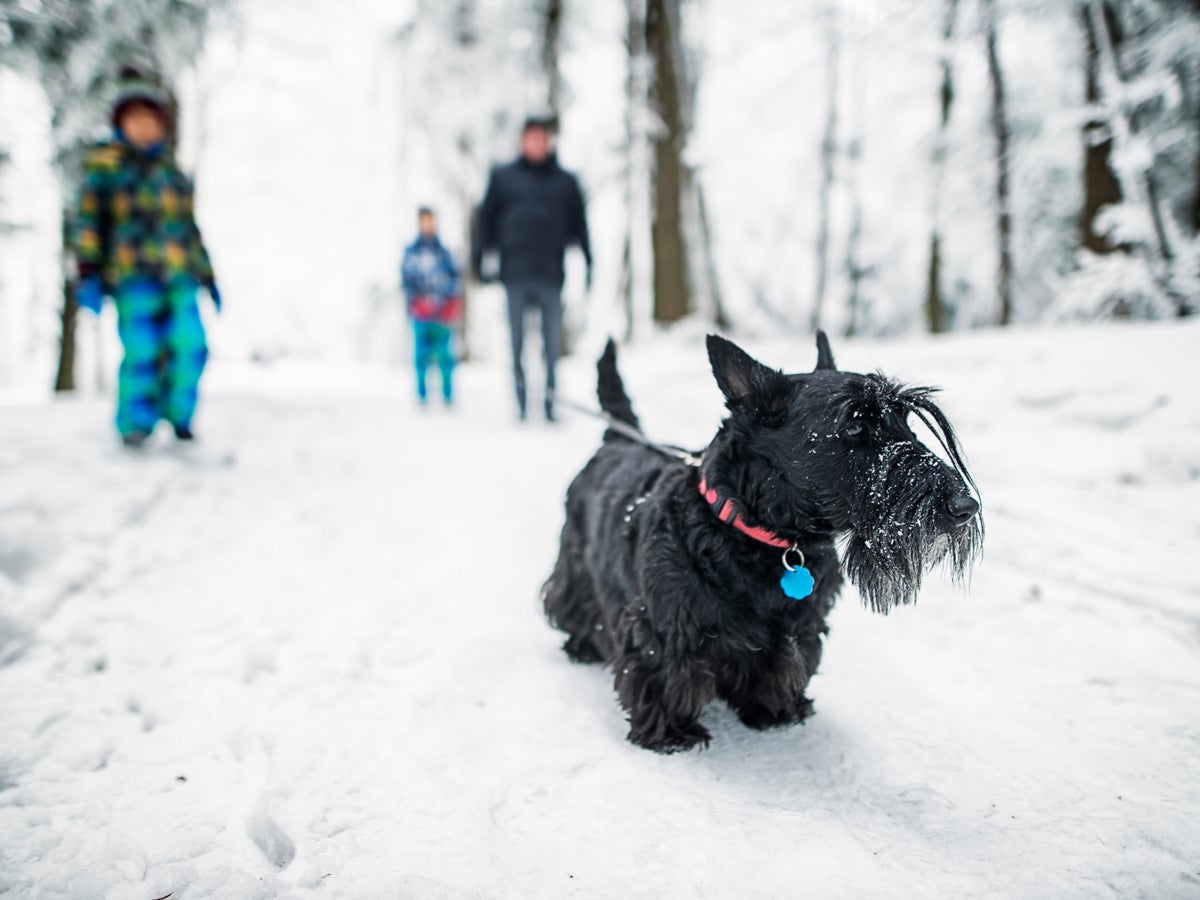
If you’re a dog owner, you know that going for a walk is the best time of the day for your dog - apart from mealtimes, of course.
But as winter conditions continue into March, the Met Office has issued a cold weather warning, predicting that a cold snap is expected to sweep the UK. Temperatures are forecast to plummet on Tuesday (7 March), touching -3C (28F) in Scotland and -2C in the northwest and east of England.
The frosty atmosphere might make some dog owners think twice before stepping out with their furry friends, but walks are still important for dogs to keep fit, stretch their legs and use up excess energy.
So how can you tell when it’s too cold to walk your dog, and what should you do to keep them warm?
How cold is too cold?
Your dog’s size and thickness of their coat will help you determine when it’s safe for them to go outside in the cold, according to Fetch Pet.
Small or medium-sized dogs with thin coats could be at risk if they go out if the temperature is 7C (44F) or lower, but big dogs with heavier coats will likely be fine.
Breeds with thick coats like Siberian huskies, samoyeds and Newfoundlands are built for colder temperatures and are probably more comfortable in the winter than in the summer.
But breeds like greyhounds are much thinner, and would benefit from a winter dog coat to keep them toasty while out for a walk.
However, Fetch Pet veterinarian Dr Aliya McCullough warns that all dogs, no matter how big they are, are at higher risk of hypothermia and frostbite at temperatures below -6C (21F).
If you observe your dog struggling during a cold-weather walk, it’s likely too chilly for them to continue. They may shiver, slow down or stop, or whine and bark if they are feeling any form of discomfort.
How do I introduce my dog to wearing a coat?
If your dog has never worn a coat before, Dogs Trust recommends introducing one carefully and slowly - don’t make them wear it straightaway as they might not react well.
Get them to familiarise themselves with a coat by laying it on the ground and putting their favourite treats on it. Once they’ve had the chance to thoroughly investigate the garment, you can start training them to be comfortable putting their head through the coat.
You can do this by lifting it and feeding them a treat through the opening, gradually moving your hand a little further back to encourage them to put their nose and mouth through the opening.
Once you’re able to get their head through, place the coat on their body and continue to give them treats. If they start to feel uncomfortable or retreat from the coat, don’t be discouraged - just try again another time.
Does my dog need winter boots?
The Blue Cross recommends getting winter booties for your canine companion if you see them lifting up their paws, whining or stopping while out on walks because their paws are too cold.
Look for doggy boots with a good sole and Velcro straps that are secure and will protect their paw pads from frosty ground.
If your dog can’t or won’t wear boots, ensure their paws are wiped down after each walk to remove any harmful material such as salt and grit, which can get between their toes and irritate their footpads.
What else should I do when walking my dog in the cold?
Walking your dog in the winter can be both cold and dark, so make sure your dog is wearing a light-up collar and that your microchipping database is up to date with your address and contact details.
You should also regularly trim the fur around your dog’s paws to prevent ice balls, which form between the pads and toes of the feet, says the Blue Cross.
Be very wary of walking your dog near frozen ponds or lakes, and keep your dog on a lead when near frozen water. The ice may not be thick enough and may break under their weight.
In the event your dog does fall through the ice, do not be tempted to go in after them. According to the Blue Cross: “Most dogs are strong swimmers and are more likely to get themselves out of trouble than you are.”







